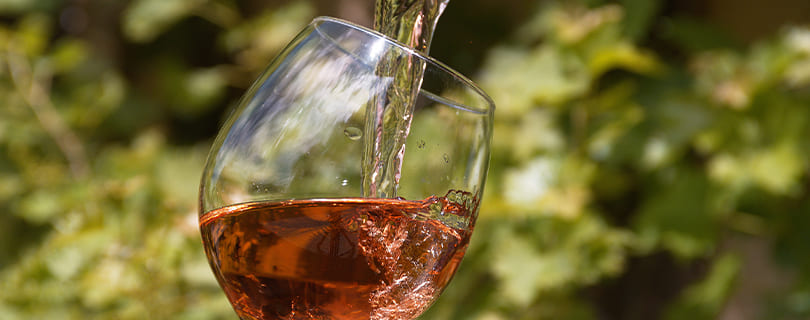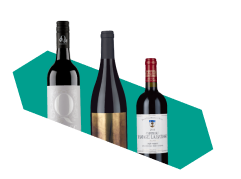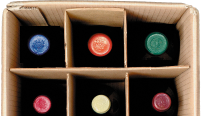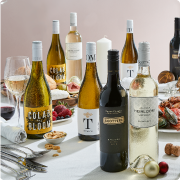Rosé has become a staple for wine lovers thanks to its fruity, refreshing flavours and photo-friendly shades. No longer just a summer wine, it’s perfect for sipping all year round, from casual weekend brunches to special occasions.
This versatile wine style ranges from bone dry to intensely sweet, crisp and delicate to rich and juicy, so you’re spoilt for choice when finding the perfect bottle.
Read on to discover what makes rosé sweet and how to find the right wine.
Explore our delicious range of dry and sweet rosé wines.
Is rosé a sweet wine?
Rosé wines can range from bone dry to somewhat sweet. While some rosés are sweet, a wine’s sweetness is determined by its sugar content, not just its taste.
You can’t gauge sweetness just by the flavours in your rosé because a wine might taste fruity and sweet but actually have little sugar. Although lighter-coloured rosés are usually drier than darker ones, a rosé wine’s colour doesn’t necessarily indicate how sweet the wine is, either.
To figure out if a rosé is sweet or dry, you can check its alcohol content. During fermentation, the grape juice’s natural sugars turn into alcohol, so wines with higher alcohol levels often have less sugar and are drier.
Several factors can impact how sweet a rosé is:

How is rosé wine made?
Wondering how your perfect glass of pink is created? Two common methods for creating rosé wine are the maceration method and saigneé method.
Maceration method – The wine gets its signature pink shade from red grape skins. Also known as the ‘skin contact method’, this involves soaking red grape skins in the grape juice during fermentation. The longer the grape skins soak, the darker the shade of pink. Darker-skinned grapes, like Mataro, may only need to be macerated for a few hours, but lighter red grapes, like Grenache, can soak for 24 hours to get the desired colour for the rosé wine. The grape skins are removed once the perfect shade is achieved.
Saignée method – This method involves turning the by-product of red wine production into rosé. Around 10% of the juice is ‘bled off’ (in French, saignée means ‘to bleed’) from the fermenting red wine and is turned into rosé. As a result, this method can create richer, bolder rosés that are more savoury than those made using the maceration method.
Which wine regions are famous for their rosé wines?
Rosé wines can be made anywhere in the world that grows red wine grapes, including Australia, France, Spain and North America. However, some areas are famous for their rosé wines.
Here at home, most rosé wine in Australia is produced in South Australia and comes in a wide variety of styles. Many rosé wines are dry with bright acidity, but some producers also make sweeter versions to suit different tastes.
Rosé wines from Provence in France are often considered some of the best on the market. They’re famous for their delicate pink colour, dry, crisp style and elegant notes of watermelon, citrus, stone fruits and fresh herbs.
These delicious rosés are made by blending mostly Grenache with other varieties, such as Cinsault, Shiraz, Mataro and Carignan. Some winemakers even include a dash of Rolle, a white grape known as Vermentino.
With its light, delicate flavours and savoury herbal finish, Provence rosé is delightful with fresh seafood, grilled white fish and green salads topped with soft goat’s cheese.
White Rock Rosé 2023 is an elegant Provence blend from one of the region’s oldest cellars.

What grapes are used in the dry and sweet rosé wine?
Here are just some of the best rosé wines from Australia and around the world to try now.
Grenache
Even though Grenache rosés are some of the driest rosé wines, they are full of life, character and fruity flavours like ripe strawberry, watermelon, raspberry and grapefruit. You might also taste hibiscus and blood orange, depending on where the grapes are grown.
Grenache rosés from South Australia, such as those from the Barossa Valley and Clare Valley, often have a subtle hint of spice.
Grenache rosé wine can vary in shade depending on where it is made. It can range from a pale blush pink to an inviting raspberry red. Its dry style and light, refreshing, summery flavours make it an ideal partner for Greek mezze feasts, soft cheeses and fresh seafood.
Try 16 Little Black Pigs Rosé 2023 – a delicious, summery and satisfying wine.
The grape is also commonly used to create blended rosé wines and is the cornerstone of French and Spanish rosé production. It’s a primary grape in France’s renowned Provence rosés and in Spain, it’s often blended with Mataro, Shiraz, Tempranillo and Carignan to make refreshing rosados.
Shiraz
Shiraz is a well-loved grape in Australia, known for producing both rich red wines and bright, flavourful rosés. These wines are packed with juicy red berry flavours like cherry and raspberry and sometimes offer hints of plum and a bit of spice or floral notes, depending on where they’re made.
In regions like McLaren Vale and Hunter Valley, Shiraz rosés often have a bit more body and character due to the grape’s bold nature. They balance fruitiness with a hint of spice.
Shiraz rosé can range in colour from light pink to a deeper shade, and it pairs well with barbecued meats, spicy foods and hearty salads.
Try the beautifully pink Angaston Road Growers Winery Block Barossa Valley Rosé.
Cabernet Sauvignon
Though Cabernet Sauvignon is known for making robust red wines, it’s also used to create lively, structured rosés.
Cabernet Sauvignon rosés typically exhibit flavours of red berries, plum and hints of green pepper and baking spice. They also have floral and herbal aromas, lifted by a refreshing acidity and supported by an easy-drinking medium body.
South Australia's Barossa Valley, Margaret River and Coonawarra regions produce excellent Cabernet Sauvignon rosés. Those from Barossa Valley are richer than the refined style made in Margaret River, while those from Coonawarra are known for their vibrancy and structured tannins.
A glass of Cabernet Sauvignon rosé, with its perfect balance of fruitiness and acidity, is a treat when served alongside grilled shrimp, salmon and roasted vegetables.
Try the ripe, award-winning Chateau Tanunda Dry Rosé 2022 from Barossa Valley.
California and parts of France are known for their delicious Cabernet Sauvignon rosé.
Pinot Noir
Pinot Noir’s rosé wines are often delicate and fresh, with strawberry and raspberry flavours. Depending on the region, they sometimes feature a hint of rose petals or herbs.
In cooler areas like Tasmania and the Yarra Valley, Pinot Noir rosés are known for their light body and crispness. They’re perfect for those who enjoy a lighter style of rosé wine.
The colour of Pinot Noir rosé typically ranges from a pale blush to a soft pink, and it’s an excellent choice for pairing with seafood, light salads, and soft cheeses.
Try our pastel pink Marchand & Burch Villages Rosé, a Pinot Noir-based blend.
Styles of rosé wine
Here’s a handy table of different rosé wines and their styles:
| Style | Notes | Varieties |
| Very dry | Red berries, grapefruit, lemon, watermelon, cucumber, fresh herbs | Tavel Grenache |
| Semi-dry | Cherry, plum, tart raspberry, smoke, baking spices | Shiraz Cabernet Sauvignon |
| Dry | Cranberry, strawberry, pomegranate, peppercorn, rose petal | Pinot Noir Tempranillo |
| Off-dry | Strawberry, cherry, Mediterranean herbs, clove, allspice | Sangiovese |
| Sweet | Raspberry, strawberry, watermelon, peach, citrus | White Zinfandel |
| Very sweet | Peach, cantaloupe melon, strawberry, citrus, orange blossom | Pink Moscato |
















